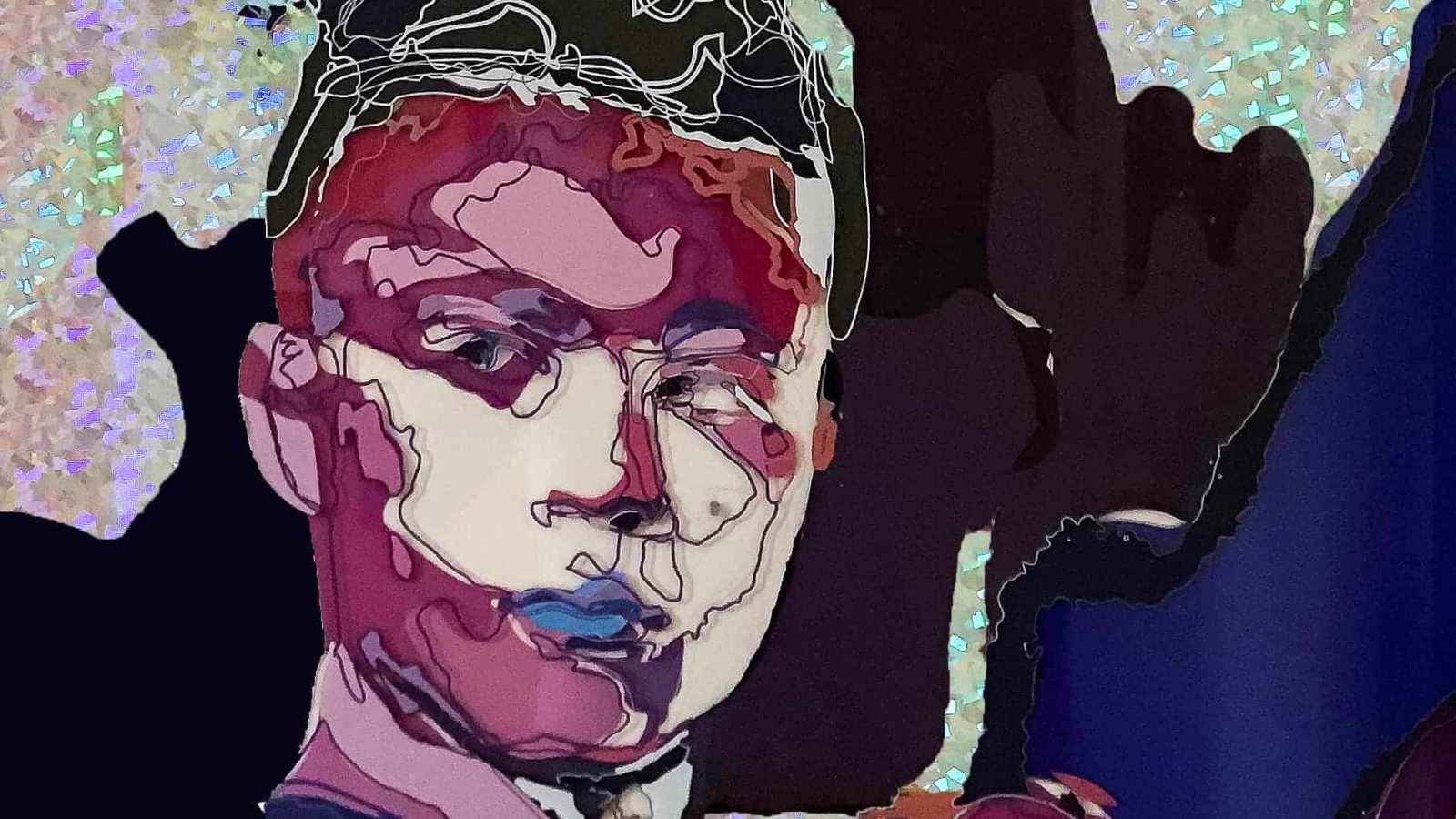A father sits at his desk, holding his infant child and offering milk in a bottle. An older child stands near him with drawing paper spread out on a chair. They are resting together in a drawing in pencil or ink on a warmly lit background, touched here and there with bright color.
In a black and white photograph, two people hold each other close, their heads turned into each other’s shoulders.
Some images are loving, and some are afraid. Some are angry, some laughing, some outspoken, and some all of these things together. They are all deeply intimate, in one way or another. Contemporary artists are looking at a subject that has become a public conversation across the country. It can be a matter of love and self-worth. It can be a matter of life and death.
And it is the matter of a group show and performances through the fall at Massachusetts College of Liberal Arts, in Spectrum: Exploring Gender Identification, running through Nov. 18 at MCLA’s Gallery 51.
The idea of gender is complex and layered, said curator Arthur De Bow. What does it mean to be a man, to be a woman, to feel like some of both or neither one?
He offered these artists the idea,”and this is not a quote from me,” he said, “that gender is not about what’s between your legs; it’s about what’s between your ears.”
Gender can involve and move beyond what we are born with, what identifies us, how we think about our minds and bodies — how we feel the people and society around us, and what they are thinking about us and about themselves.
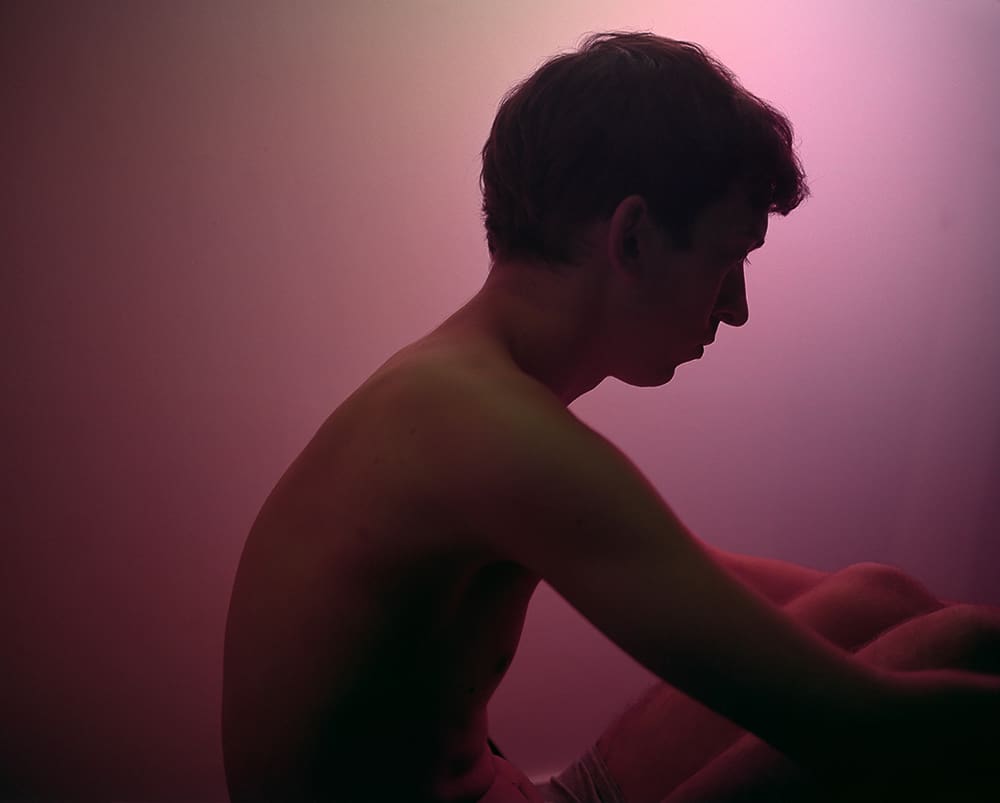
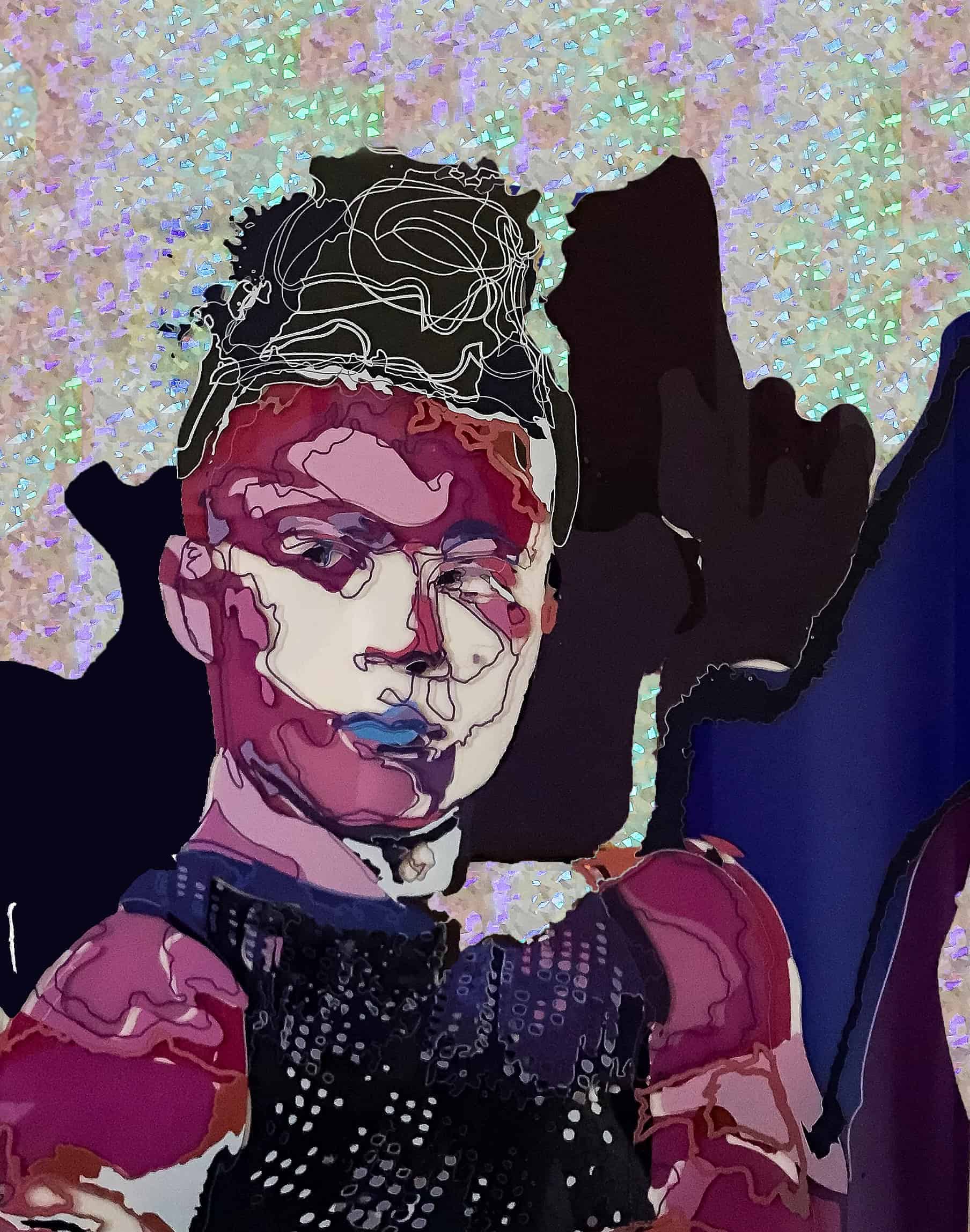
Seeing the rainbow
“(This show) begins as all my shows do,” he said. “… (with) what’s topical, what has appeal, what could have importance in this time and space, and this place.”
In an exhibit space belonging to a college, he is aware always of work that matters to the students, that touches what they are learning and what they are living through.
“Issues of gender, which for me transcend and (encompass) inclusion and diversity, are at the forefront in our society right now,” he said. “They have come to the surface as important nationally and internationally, here or on campus.”
He has spent many years exploring the influence of art in a college community. He and his husband came to North Adams from Oregon two years ago, and De Bow had served as exhibits director and curator of alumni affairs at the Oregon College of Art and Craft in Portland for more than 20 years. He has also run and curated galleries in Portland and New York, and he is an artist himself — in book and fiber arts, prints, mixed media, and costume design in Portland and Off-Broadway.
He has known many artists doing work dealing with these themes, and yet the response he has gotten for this show overwhelmed and delighted him. He put out a national call for submissions, he said, to broaden the scope and the diversity of the artists in this exhibit, and where they live in the U.S. and the world, which can have a bearing on their work.
The jury received more than 160 submissions and 500 pieces of work, and they have chosen 38 pieces by 30 artists across the country, from Texas to Missouri, Los Angeles to the Bronx, and three are international artists, from the United Kingdom Thailand and Slovenia.
The show gathers work in many media — film, 3-D, ceramics, fiber art, photography, paintings, drawings, mixed media, wood and metalwork.
“We are thrilled about this,” De Bow said. “We have work in the show that is strikingly beautiful. Work that is full of content. Work that is thought-provoking. Work that I know will be challenging in its concept, in its message, and potentially, for some, in its imagery.”
He made sure that the jurors, including himself, did not turn away from a work because it challenged them or might challenge others. They chose each work for its strength and quality and integrity.
“What makes a successful artwork is that it moves the viewer,” he said.
It may move someone to joy, pain, anger — what matters is that the work provokes an emotion. If it calls out strong feeling, any feeling, then it has power.
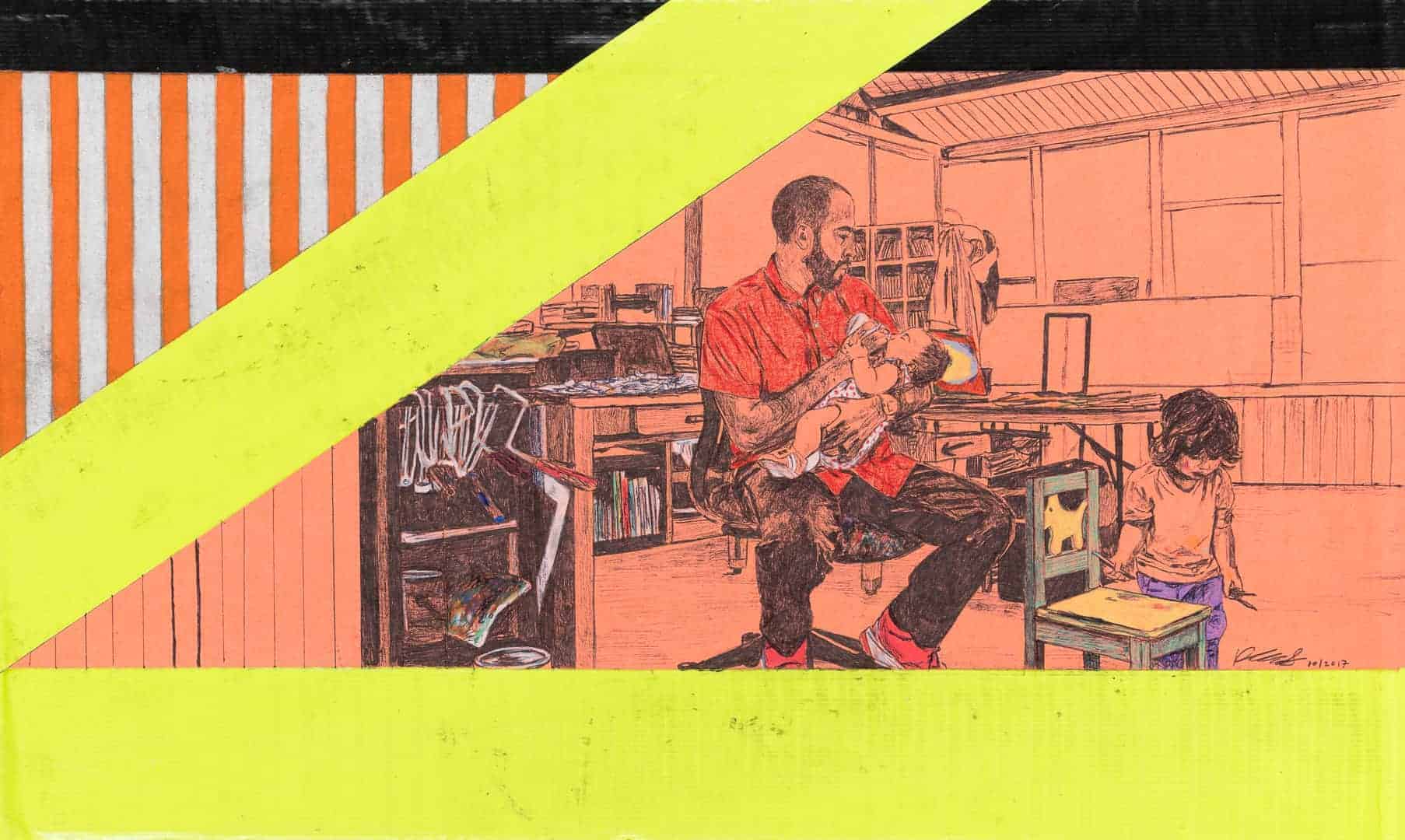
A room of their own
It is important to De Bow to be as inclusive as possible in this show, he said, on a topic that touches every living human, as it is important to him to support artists and show work that he feels are not getting as much exposure as they should.
He has heard from many of the artists who applied, excited in their turn — thank you for doing this, they said. Thank you for giving my work a place to be shown.
So this show considers gender on a broad continuum, from extreme masculinity to extreme femininity and every nuance in between, gay, trans, queer, binary and non-binary. The artists reveal observations of the people around them, patterns they see in society and challenges they have faced.
Raul Gonzales from San Antonio, Texas, reflects on what it means to be a dad, a man who works at home and looks after his children — his work considers how he feels, and how other people see him, because he has chosen to stay home while his wife leaves the house to work.
Around him, artists reveal themselves. They confront hostility, and they honor courage. In a serene and beautiful photograph, De Bow feels a celebration of who that person is and how they show themselves in that image. They may also say this is real, this is me, this is now; deal with it, and if you don’t like it, tough luck.
“Some are humorous,” he said. “Some are extremely funny.”
That morning he had opened a wooden crate, as excited as a boy on Christmas morning, reveling in each nail he took out as he came closer to lifting the lid.
It held a pair of giant-sized, bright red glittering stiletto heels.
“They’re wonderfully made,” he said, “and funny. I get what they’re saying, and they make me laugh. To me they say celebration, fun, dress-up, drag, bright color, and they say what the color red says — it’s vibrant and alive.”
He imagines someone wearing them, and they have the larger-than-life charisma of anything oversized, as loud as a colossal banana or grapefruit. They’ve stepped out of the realm of the everyday.
And they balance comedy and joy with serious skill — like a dancer in the Ballet Trocadero leaping twice his own height in toe-shoes.
These giant high heels and other works also recognize assumptions in what people can come to believe about gender, often without knowing it. A child in a red shirt rubs tired eyes with a sleeve that says Boys don’t cry. A figure sits in silhouette, with short hair and knees drawn up, bathed in a deep rose light.


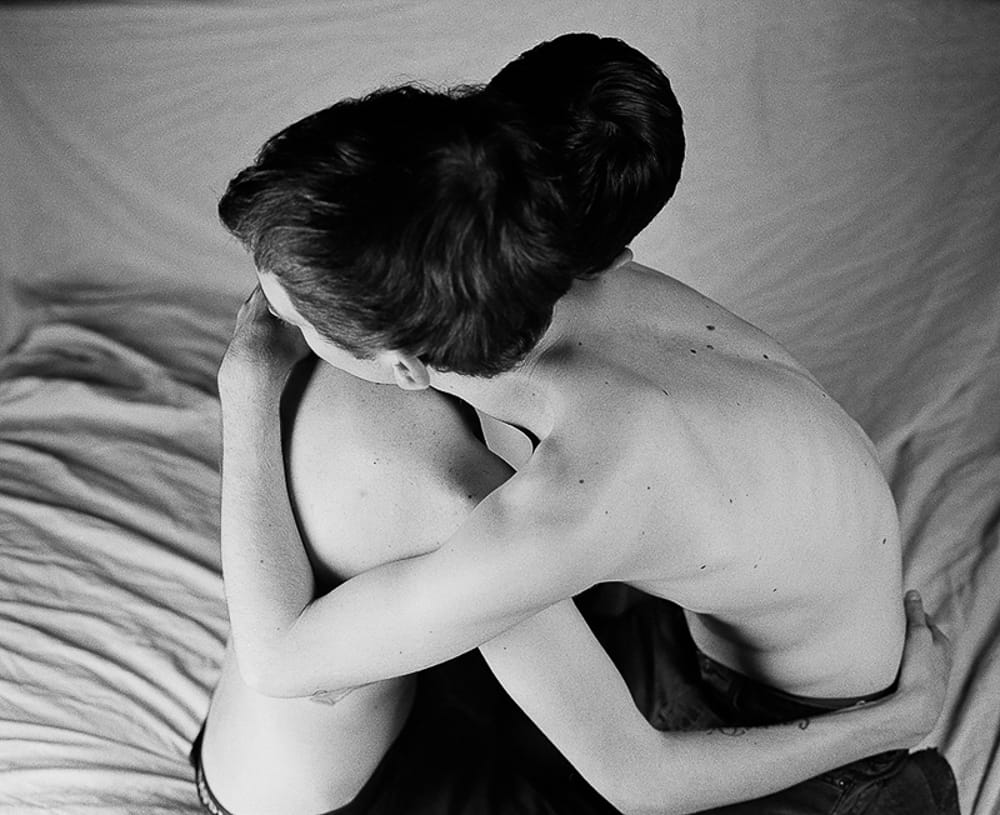
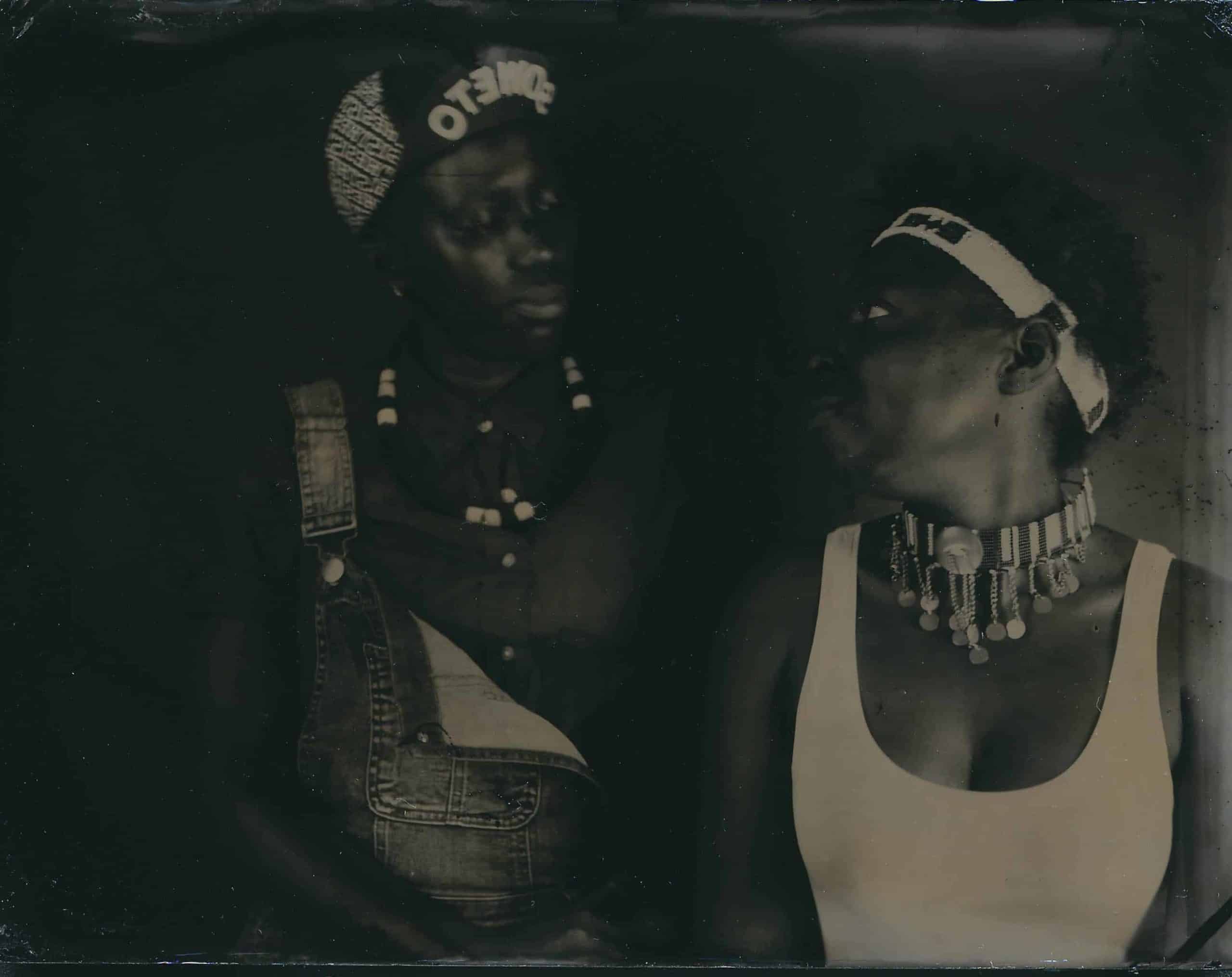
Images like these can allude, directly or indirectly, to the messages people take in about men and women, how they are supposed to act, what they are supposed to wear or say or do.
People are calling out those assumptions today and challenging them in many public forums — in dance and music, in film and on social media. DeBow has seen the debate in YouTube videos.
“Those barriers are getting broken down,” he said.
A boy can play with dolls, or a girl with a football — and that does not have to mean anything about their gender or expression or orientation, or about anything but that they like people or running or games.
De Bow has confronted assumptions and barriers himself, in many ways.
“As a gay man growing up, I was extremely interested in sports,” he said, “and I was very good at sports. That was put down by what I’d loosely call the gay community. … I used to jokingly say I finally came out of the closet as a jock.”
As a double arts and theater major, he also found it hard in those days to say he enjoyed athletics and competition as well.
It’s a frustration common to “anyone questioning any form of identification and dealing with conflicts about it,” he said. He finds it also in people who feel that in some way they do not fit the shape their nation or faith or society assigns to their gender — women who choose not to wear makeup, or enjoy playing Henry V, or fall in love with women …
He feels it in young people considering transitioning away from the bodies they were born into, for many reasons “— (they may hear) society saying ‘you must want to change from a birth female to a male because you like sports … or from a male to a female because you want to wear makeup and frilly clothes.’ (And they’re saying) no, it’s because of what I feel, in my body, in my brain, and so many things around that.”
In this show, two base-ball style jackets hang casually on chairs, showing the embroidered messages on the backs. Where they might say Kingpins Bowling Team
one reads Transgender Gun Club, and the other Name Your Rapist.
“They’re poignant and a little in-your-face, appropriately,” he said.
They are recognizing the violence and the consequences people can face for talking about gender as a complicated issue, and for living openly.
Other works are tender, De Bow said. He recalls a photograph of a lover cutting her partner’s hair. Quietly, in a sheltered room, one person is touching another. Her partner is transitioning from one body to another. They sit with their eyes closed, and she moves a hand gently in their hair.
Spectrum will also programming throughout the fall including ‘What is queering? on Oct. 25, a facilitated conversation exploring what it means to queer culture/literature/theory, and Specturm: Embodied on Nov. 16 and 17, two days of performances including a community ballez class with choreographer Katy Pyle.

